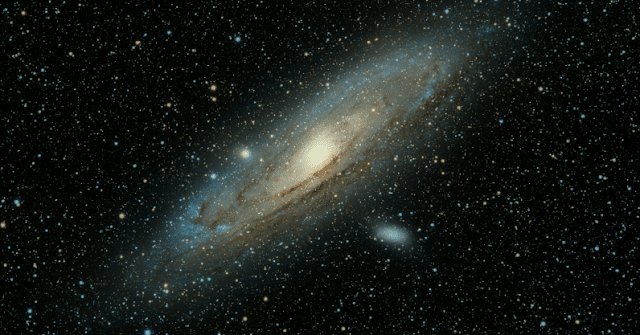The center of the Milky Way twinkles in radiation — this could explain how supermassive black holes behave
The center of the Milky Way twinkles in microwave radiation, seen in new data obtained by astronomers using the Atacama Large Millimeter/submillimeter Array (ALMA) in Chile. This study could help explain the behavior of supermassive black holes found throughout the Cosmos.
Supermassive black holes reside in the central core of every major galaxy. The one at the center of our own galaxy is called Sagittarius (Sgr) A* (usually pronounced SAJ a star).
An artist’s impression of hot spots in the disk surrounding the
supermassive black hole near the center of the Milky Way. Image credit:
Keio University
The light curves of hot spots orbiting Sgr A*. Image credit: Y. Iwata et al./Keio University
Sagittarius A* has the mass of four million suns. Astronomers have seen flaring of radiation from this supermassive black hole before, but never in the detail recorded in this new study.
Hot spot, bright wavelengths
Thick clouds of gas and dust, obscuring the view of Sgr A* from Earth in visible wavelengths. However, it is possible to see through this material using instruments designed to detect radio and microwave emissions.
A team of astronomers examining the core for electromagnetic radiation with wavelengths of around one millimeter discovered a semi-repeating signal of microwave radiation. Astronomers knew that Sgr A* occasionally flares up at the wavelengths observed in the study, but the reason for the display was uncertain.
The ALMA team studied Sgr A* for 70 minutes a day, over 10 days. They found one wave of radiation amplifying and dimming over the course of an hour, and another which cycled in half that time.
Researchers on the discovery believe the energy may be the result of a pair of bright radio spots orbiting close to the supermassive black hole.
Such hot spots would circle exceedingly close to the black hole, where gravity and radiation have extreme effects. A body with an orbital period of 30 minutes would orbit just 0.2 astronomical units from this behemoth black hole. This is one-fifth the distance between the Earth and Sun, and half the distance Mercury orbits from our parent star.
“This emission could be related with some exotic phenomena occurring at the very vicinity of the supermassive black hole,” suggests Tomoharu Oka of Keio University.
One theory to explain these features suggests that hot spots may occasionally form in the disk, emitting signals in microwave wavelengths. As the hot spot rotates, heading toward Earth at nearly the speed of light, relativistic effects amplify the signal.
The world was recently awed by the release of the first-ever picture taken of the region surrounding a black hole in the galaxy M87. It is very likely the second image of a black hole will be our own supermassive black hole, Sgr A*. The NASA video below provides a look at the first black hole for which there exists a detailed image, the supermasssive black hole near the core of the galaxy M87.
Hot spot, bright wavelengths
Thick clouds of gas and dust, obscuring the view of Sgr A* from Earth in visible wavelengths. However, it is possible to see through this material using instruments designed to detect radio and microwave emissions.
A team of astronomers examining the core for electromagnetic radiation with wavelengths of around one millimeter discovered a semi-repeating signal of microwave radiation. Astronomers knew that Sgr A* occasionally flares up at the wavelengths observed in the study, but the reason for the display was uncertain.
The ALMA team studied Sgr A* for 70 minutes a day, over 10 days. They found one wave of radiation amplifying and dimming over the course of an hour, and another which cycled in half that time.
Researchers on the discovery believe the energy may be the result of a pair of bright radio spots orbiting close to the supermassive black hole.
Such hot spots would circle exceedingly close to the black hole, where gravity and radiation have extreme effects. A body with an orbital period of 30 minutes would orbit just 0.2 astronomical units from this behemoth black hole. This is one-fifth the distance between the Earth and Sun, and half the distance Mercury orbits from our parent star.
“This emission could be related with some exotic phenomena occurring at the very vicinity of the supermassive black hole,” suggests Tomoharu Oka of Keio University.
One theory to explain these features suggests that hot spots may occasionally form in the disk, emitting signals in microwave wavelengths. As the hot spot rotates, heading toward Earth at nearly the speed of light, relativistic effects amplify the signal.
The world was recently awed by the release of the first-ever picture taken of the region surrounding a black hole in the galaxy M87. It is very likely the second image of a black hole will be our own supermassive black hole, Sgr A*. The NASA video below provides a look at the first black hole for which there exists a detailed image, the supermasssive black hole near the core of the galaxy M87.








No comments:
Post a Comment